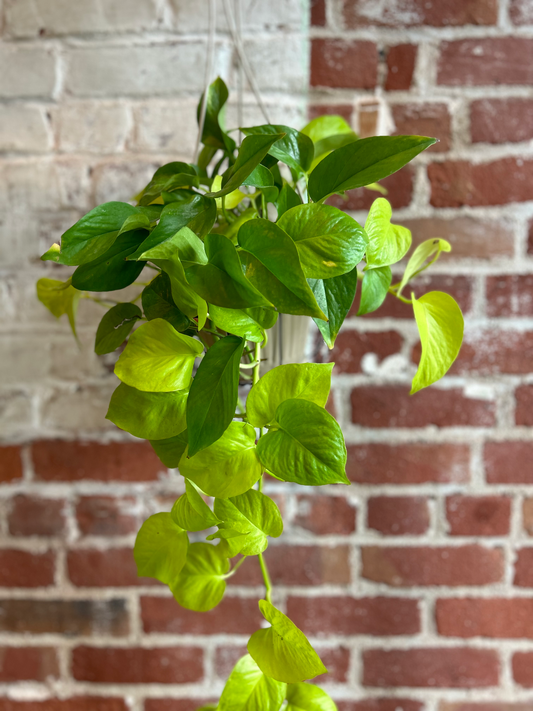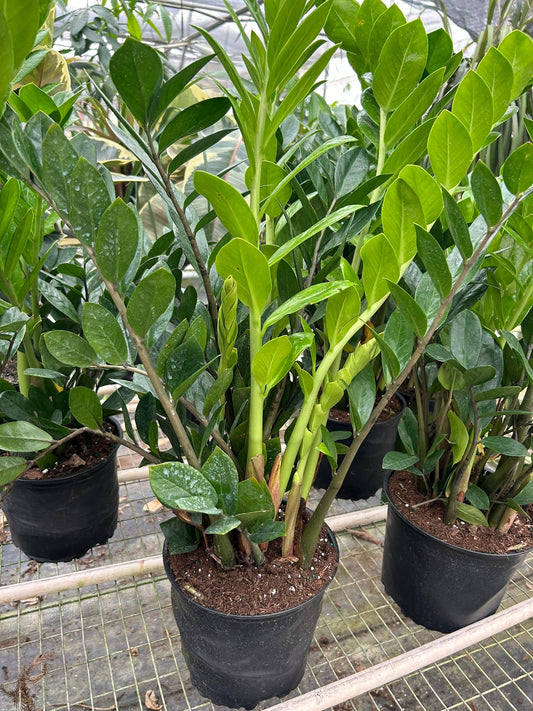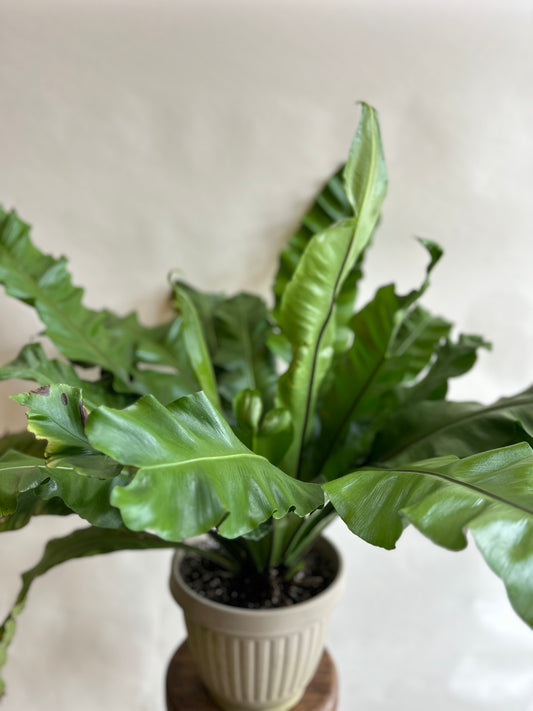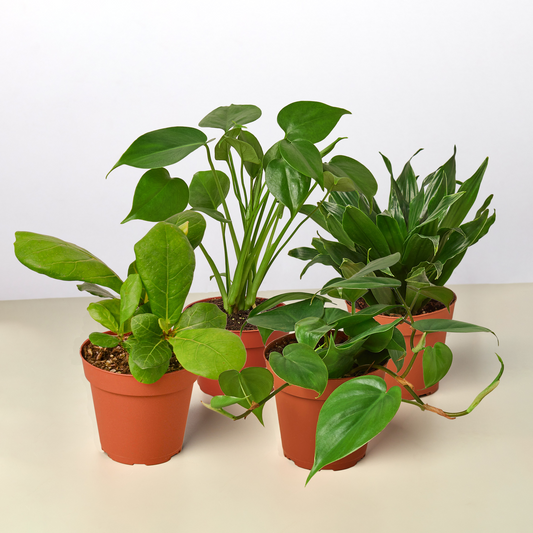How to Grow and Care for Cattleya Orchids
Cafe Planta Team
If you’ve ever found yourself captivated by the vibrant and exotic beauty of orchids, you’re not alone. Among the many types of orchids, Cattleya orchids stand out with their spectacular blooms and wonderful fragrance. But how do you grow and care for these stunning plants to ensure they thrive in your home?
This article will take you through everything you need to know about growing and caring for Cattleya orchids. We’ll cover topics like selecting the right plant, potting and soil care, watering routines, light requirements, dealing with pests, and even how to incorporate them into your home decor. So, let’s get started!
Choosing the Right Cattleya Orchid
Choosing the right Cattleya orchid is the first step in your orchid journey. With so many varieties out there, it might feel a bit like choosing your first pet! The trick is to select a plant that suits your environment and lifestyle.
Cattleyas are available in a range of colors and sizes, so consider the space you have available and the aesthetic you want to achieve. Are you looking for a bright pop of color, or something more subtle? Cattleyas can offer both. Here are a few tips to help you choose:
- Look for healthy roots: A healthy Cattleya orchid should have firm and white roots. Avoid plants with brown or mushy roots, as this can indicate rot.
- Check the leaves: The leaves should be firm and green without any black spots or blemishes, which can be signs of disease.
- Consider the bloom size: Cattleyas can have large, showy blooms or smaller, more delicate ones. Think about what will fit best in your space.
- Fragrance: If scent is important to you, be sure to select a variety known for its fragrance.
Once you’ve picked out your perfect Cattleya, you’re ready to think about its new home.
Potting and Soil Requirements
Cattleyas, like many orchids, have specific potting and soil needs. These plants are epiphytes, meaning they naturally grow on trees and absorb moisture and nutrients from the air. This makes their potting situation a bit unique compared to your typical houseplant.
When potting your Cattleya, you’ll want to use a medium that provides good aeration and drainage. Here are some potting medium options:
- Bark mixes: These retain moisture yet allow for airflow around the roots.
- Sphagnum moss: This can help retain moisture but be careful not to overwater.
- Perlite and charcoal: These can be added to improve drainage and prevent compaction.
Choose a pot that allows excess water to drain easily. Clear pots are often recommended as they let you monitor the root health and moisture level. Repotting is usually needed every 2-3 years, or when the potting medium breaks down. This keeps the plant healthy and gives it room to grow.
Watering Your Cattleya Orchid
Watering is where many orchid parents go wrong, but it doesn’t have to be complicated. Cattleya orchids prefer a “dry out” period between waterings. This means you should let the potting medium dry out before watering again.
Here’s a simple way to manage your watering schedule:
- Check the medium: Stick a finger into the potting mix; if it feels dry down to about an inch, it’s time to water.
- Water thoroughly: When watering, ensure the water runs through the pot to flush away any salt build-up. Avoid letting the orchid sit in water.
- Adjust for environment: In warmer months, your orchid may need more frequent watering, while in cooler months, less often is needed.
Remember, overwatering is a common mistake. If you’re unsure, it’s better to err on the side of underwatering. Your Cattleya will thank you!
Light Requirements for Cattleya Orchids
Light is crucial for the health and blooming of Cattleya orchids. These plants love bright, indirect light. Imagine the light they’d receive under a tree canopy—that’s what you’re aiming for.
Here are some tips to get the lighting just right:
- Location: A south or east-facing window is ideal, but be sure to protect the plant from direct sunlight to prevent leaf burn.
- Leaf color: The leaves can give you clues about whether your Cattleya is getting the right amount of light. A nice light green color indicates a happy plant, while dark green leaves might suggest it needs more light.
- Supplemental lighting: If natural light is insufficient, consider using grow lights to provide the needed light intensity.
Balancing light levels will encourage healthy growth and beautiful blooms.
Temperature and Humidity Needs
Cattleyas are tropical plants, which means they thrive in warm conditions. However, they also need a drop in temperature at night to mimic their natural environment.
Here’s how to maintain the right temperature and humidity:
- Temperature: Aim for daytime temperatures between 70-85°F (21-29°C) and nighttime temperatures around 55-65°F (13-18°C).
- Humidity: Cattleyas prefer higher humidity levels, around 50-70%. You can increase humidity by misting the leaves, using a humidity tray, or placing a humidifier nearby.
- Air circulation: Ensure good air movement around your orchids to prevent mold and rot. A small fan can help with this.
By creating a warm, humid environment with good air circulation, your Cattleya will thrive and reward you with beautiful blooms.
Fertilizing Your Orchid
Feeding your Cattleya is key to encouraging growth and blooms. Orchids aren’t heavy feeders, but they do benefit from a regular feeding schedule.
Here’s a simple approach to fertilizing:
- Type of fertilizer: Use a balanced orchid fertilizer, typically labeled as 20-20-20 or 30-10-10.
- Frequency: Fertilize every two weeks during the growing season (spring and summer), and reduce to once a month during the dormant period (fall and winter).
- Application: Always dilute the fertilizer to half the recommended strength to avoid burning the roots.
Regular feeding will help your Cattleya grow strong and produce those gorgeous flowers you’re looking forward to.
Dealing with Common Pests and Problems
Like all plants, Cattleya orchids can occasionally face pest issues. The good news is that with a little vigilance, you can keep your orchids healthy and pest-free.
Here are some common problems and how to tackle them:
- Mealybugs and scale: These pests can be removed by gently wiping the leaves with a cotton swab dipped in rubbing alcohol.
- Spider mites: Increase humidity and rinse the plant with water to dislodge these tiny pests. Neem oil can also be an effective treatment.
- Root rot: Often caused by overwatering, this can be avoided by allowing the potting medium to dry out between waterings and ensuring good drainage.
- Leaf spots: These can indicate a fungal or bacterial infection. Remove affected leaves and treat with a fungicide if necessary.
Regular inspections and prompt treatment will help keep your Cattleya healthy and thriving.
Incorporating Cattleya Orchids into Your Home Decor
Cattleyas aren’t just beautiful plants—they can be a stunning addition to your home decor. Their vibrant colors and interesting shapes make them perfect for adding a touch of elegance to any room.
Here’s how you can incorporate them into your home:
- Display stands: Elevate your orchids using stands or shelves to add height and drama to your plant displays.
- Grouping: Combine Cattleyas with other orchids or houseplants for a lush, tropical look.
- Containers: Choose decorative pots that complement your home’s style, whether it’s modern, rustic, or eclectic.
- Bloom spotlight: When your Cattleya is in bloom, place it in a prominent location where it can be appreciated by everyone.
Whether you’re placing them in your living room, bedroom, or even the bathroom, Cattleya orchids can add an exotic flair that’s sure to impress.
Propagation Techniques
Ready to expand your orchid collection? Propagating Cattleya orchids can be a rewarding challenge. These orchids can be propagated by division, which is best done during repotting.
Here’s how to do it:
- Choose a healthy plant: Select a mature Cattleya with at least four or five pseudobulbs.
- Divide gently: Carefully remove the orchid from its pot and gently separate the roots, ensuring each division has at least three pseudobulbs.
- Repot divisions: Place each division in its own pot with fresh potting medium, ensuring the roots are covered but the pseudobulbs remain above the medium.
- Water lightly: Water the newly potted divisions sparingly until new growth appears, then resume regular watering.
Propagation allows you to share your love of Cattleyas with friends and family or simply expand your own collection.
Final Thoughts
Growing and caring for Cattleya orchids can be a delightful experience. From choosing the right plant to mastering the art of watering and creating the perfect environment, these stunning orchids can thrive and fill your home with color and fragrance.
At Cafe Planta, we're passionate about helping you succeed in your plant journey. Whether you're looking for new plants or need advice, we're here to help. Feel free to email us or reach out on Instagram. Let's grow together!




















